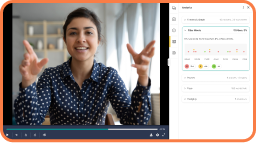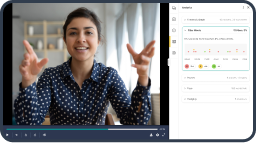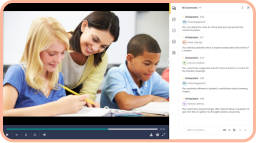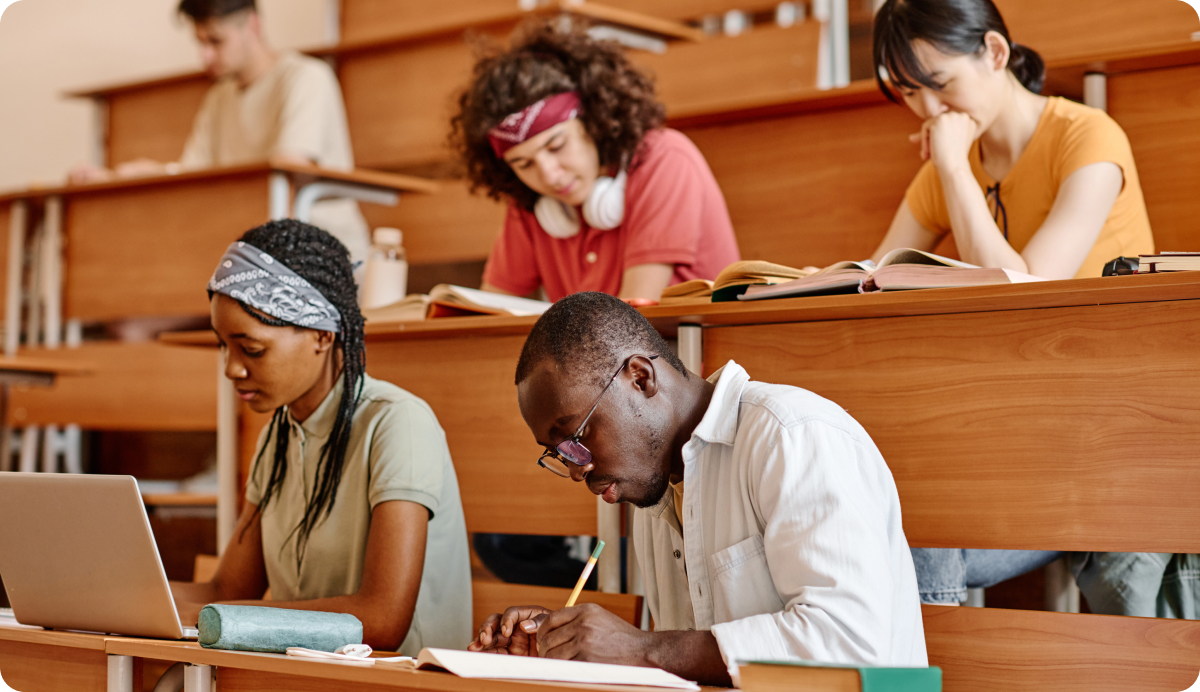It’s time to rethink how skills are built. Today’s learners aren’t just expected to know—they’re expected to do. But are they actually getting the chance to practice the skills they’ll need in the workforce?
According to a survey by the National Association of Colleges and Employers (NACE), only 50% of employers believe college graduates are proficient in key career readiness competencies like communication, critical thinking, and professionalism. By contrast, over 75% of students think they’re already prepared. This disconnect reveals a critical gap between education and employment—and it points to a lack of meaningful, skills-based learning experiences.
Across K-12, higher education, and workforce training, there’s growing pressure to close this gap. Institutions are being asked to produce career-ready graduates, demonstrate performance-based outcomes, and adopt more practice-based learning models.
One solution is gaining traction: video.
Video is a powerful, yet underutilized, tool in education. Video takes learning beyond passive consumption—enabling students to practice, reflect, and receive feedback in a more authentic, performance-oriented way. When used intentionally, video helps shift learning from passive to purposeful.
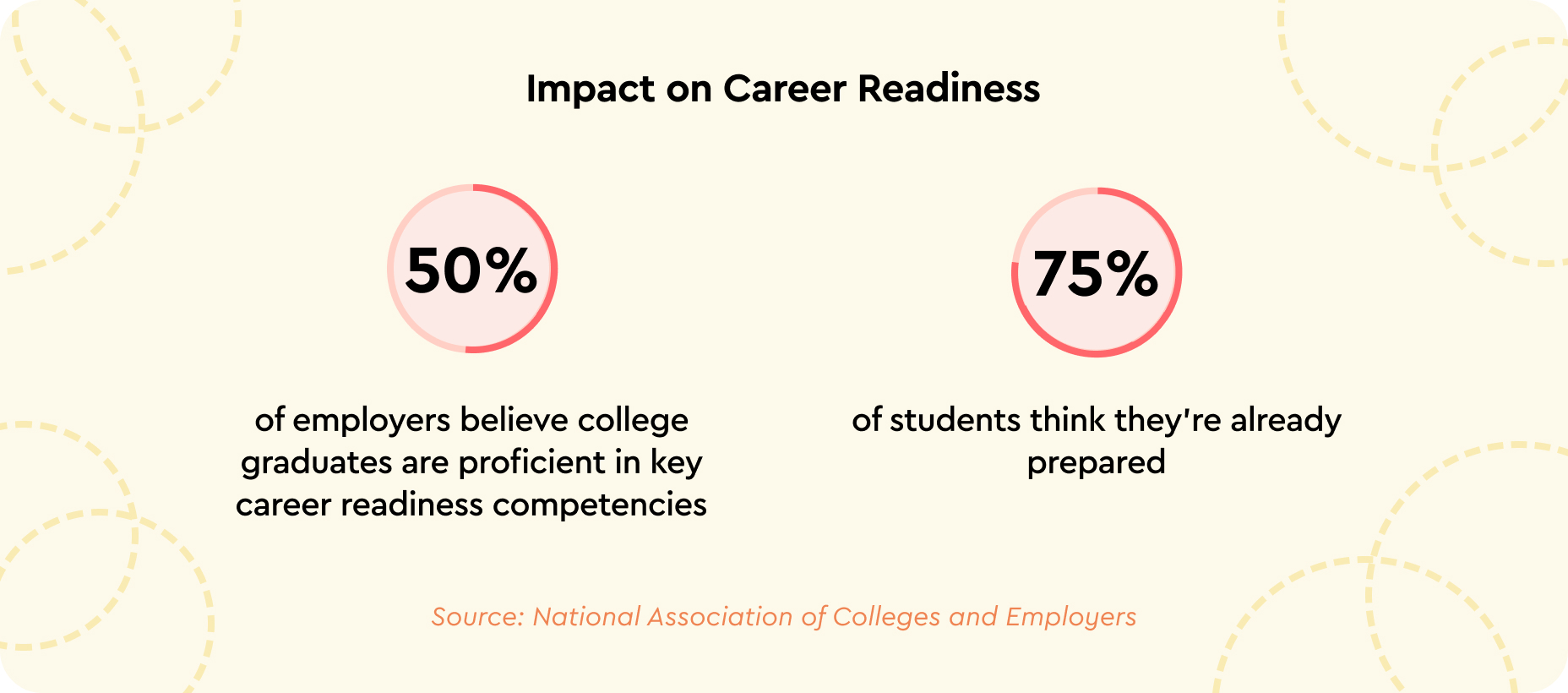
Why Skill Practice is the Missing Piece in Learning
Traditional education often prioritizes knowledge transfer: lectures, readings, and tests that evaluate what students know, not what they can do. But skills, especially soft skills like communication, teamwork, and problem-solving, require active performance.
In reality, students often have limited opportunities to demonstrate skills in real time, get feedback, and try again. That’s a missed opportunity because deliberate practice, timely feedback, and competency-based assessment are essential to effective skill development.
According to research published in Educational Philosophy and Theory, reflection and repetition significantly improve metacognition and learning outcomes. But without the ability to capture, revisit, and refine their performance, students struggle to grow beyond surface-level understanding.

4 Ways Video Enables Better Skills Practice
1. Flexibility and Accessibility
With video practice, students can record performances on their own schedule from anywhere. This reduces classroom pressure and allows for repetition and experimentation, which are critical for mastery. Whether it’s a teacher candidate rehearsing a lesson or a nursing student practicing patient interactions, video makes asynchronous practice possible.
2. Reflection and Self-Assessment
Seeing yourself on video can be a powerful wake-up call. Learners gain a new perspective on their own strengths and growth areas, supporting metacognition and self-directed improvement. This is the foundation of reflective practice, a proven method for developing real-world skills.
3. Targeted Feedback From Instructors and Peers
GoReact enables instructors to pause, annotate, and give time-stamped feedback, turning static recordings into rich learning moments. Peers can also provide input asynchronously, creating a community of practice where feedback is ongoing and multidimensional.
4. Scalability and Efficiency
Large classes or resource-limited programs often struggle to offer personalized coaching. Video practice extends an instructor’s reach, supporting more learners without requiring more time. GoReact, for example, has helped institutions scale feedback and assessment in programs ranging from education to healthcare and the trades.
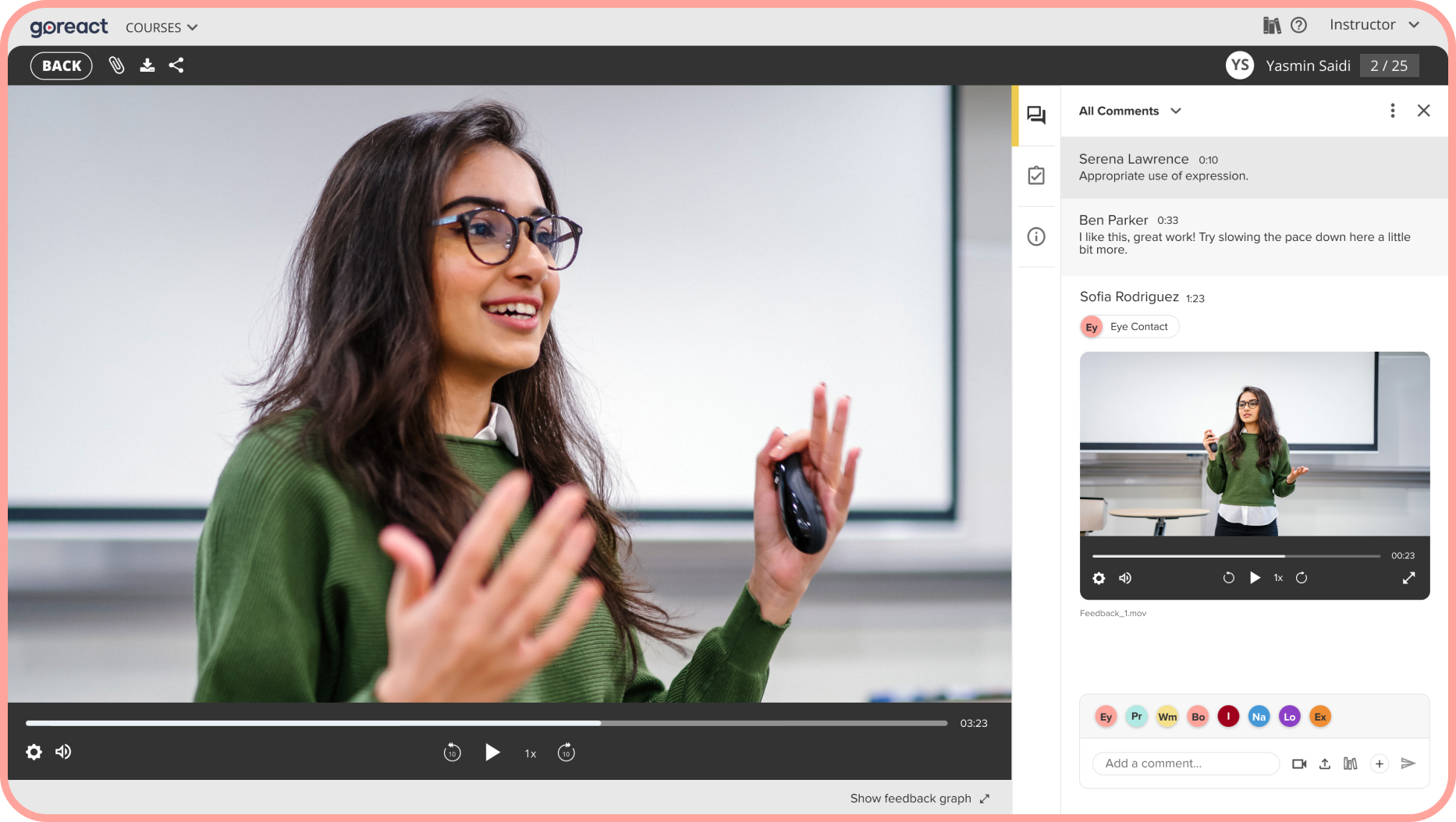
Where Video Practice Makes the Biggest Impact
Video becomes a transformative tool when learning shifts from theory to performance. In high-stakes, skills-based environments, learners don’t just need to understand concepts, they need to demonstrate them. That’s where video shines: offering a repeatable, reviewable, and coachable experience that builds real-world competence. Here are a few fields where video practice can have the greatest impact:
- Teacher Preparation: Candidates can record microteaching sessions, reflect on classroom strategies, and receive targeted coaching — an approach used by programs like this one.
- Communication-Intensive Fields: Nursing, counseling, and performing arts all require learners to demonstrate interpersonal skills under pressure. Video helps build those skills in a safe, reviewable format.
- Career and Technical Education (CTE): Students can document hands-on tasks like welding, cosmetology, or mechanics, then review technique and receive feedback — enhancing both competence and confidence.
- Corporate & Workforce Training: Whether it’s onboarding, sales training, or role-playing tough conversations, video boosts readiness and retention in professional environments.

Turning Practice Into Progress: Real Results for Institutions
Video practice doesn’t just benefit individual learners; it drives measurable improvements across entire programs. When institutions and organizations embed video into their instructional strategies, they create scalable systems for building, assessing, and refining real-world skills. The result? More confident learners, more efficient faculty, and more impactful learning outcomes. Here’s what institutions are seeing when they make video a core part of skill development:
- Stronger Student Confidence & Competence
Students don’t just feel more prepared — they are more prepared. Video practice offers authentic performance experience that builds both skill and self-assurance.
- Higher Engagement & Retention
Active, performance-based learning keeps students motivated. Video adds a personal, reflective layer that deepens commitment and connection to the material.
- Clear, Measurable Skill Development
With consistent video practice, instructors can track progress over time and evaluate performance against real-world standards. Tools like GoReact support rubrics and time-stamped feedback to make assessment more transparent and aligned to competencies.
- Actionable Program-Level Insights
Video-based assignments generate valuable data that can inform curriculum design, support accreditation efforts, and highlight areas for program improvement.
- Greater Efficiency for Faculty & Staff
Instructors can provide high-quality, asynchronous feedback without doubling their workload. In online and hybrid environments, this efficiency is especially critical. Learn more in our guide to closing the skills gap with hands-on learning.
Build Job-Ready Skills Faster With GoReact and Video
Video isn’t just a supplement—it’s a strategy. To meet the demands of today’s workforce, institutions must create purposeful, active learning experiences that help students practice, reflect, and improve.
That’s exactly what GoReact was built to do. With GoReact, educators and trainers can simplify the process of capturing performance, delivering feedback, and tracking progress. It’s how modern learning becomes more intentional, more efficient, and more impactful.
Want to see how it works?
Explore GoReact to learn how you can empower your learners through video-based skill development.


